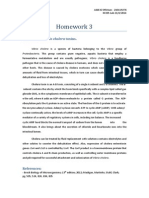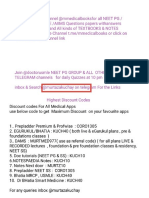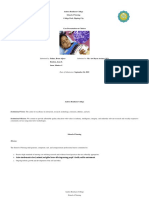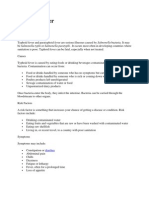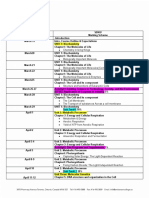0% found this document useful (0 votes)
52 views7 pagesCBS Signalling Tutorial
The doctor suspects the children have cholera based on their symptoms of vomiting and severe watery diarrhea. They likely contracted the infection from the local river, as they had spent an afternoon playing near it after a group camping there had left. Cholera is caused by the bacterium Vibrio cholerae, which produces a toxin that modifies G proteins involved in intracellular signaling. The doctor began oral rehydration therapy to treat the life-threatening dehydration and electrolyte imbalance resulting from the infection.
Uploaded by
Abdulmuizz QCopyright
© © All Rights Reserved
We take content rights seriously. If you suspect this is your content, claim it here.
Available Formats
Download as DOCX, PDF, TXT or read online on Scribd
0% found this document useful (0 votes)
52 views7 pagesCBS Signalling Tutorial
The doctor suspects the children have cholera based on their symptoms of vomiting and severe watery diarrhea. They likely contracted the infection from the local river, as they had spent an afternoon playing near it after a group camping there had left. Cholera is caused by the bacterium Vibrio cholerae, which produces a toxin that modifies G proteins involved in intracellular signaling. The doctor began oral rehydration therapy to treat the life-threatening dehydration and electrolyte imbalance resulting from the infection.
Uploaded by
Abdulmuizz QCopyright
© © All Rights Reserved
We take content rights seriously. If you suspect this is your content, claim it here.
Available Formats
Download as DOCX, PDF, TXT or read online on Scribd
/ 7






